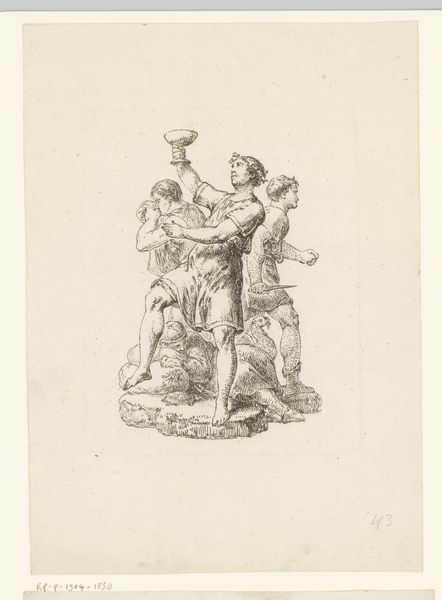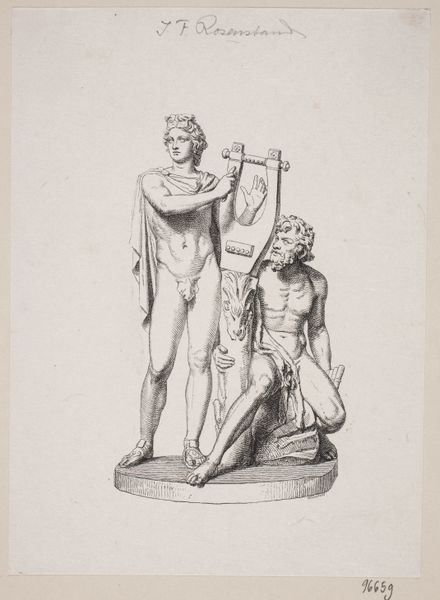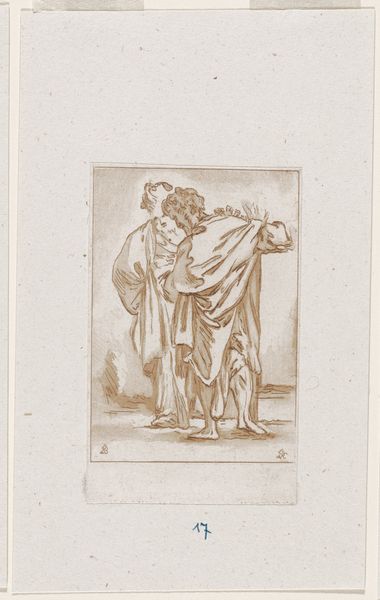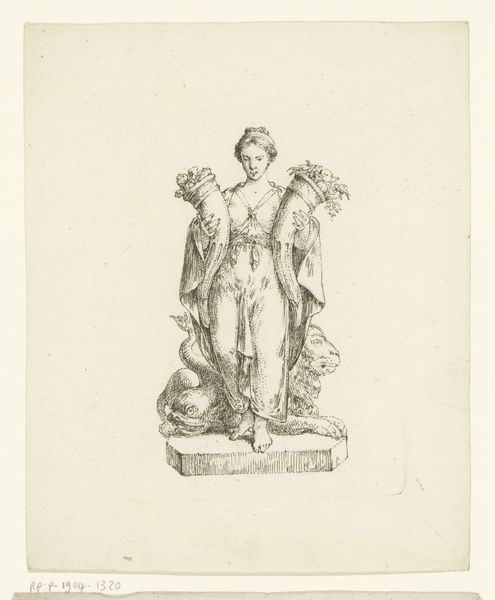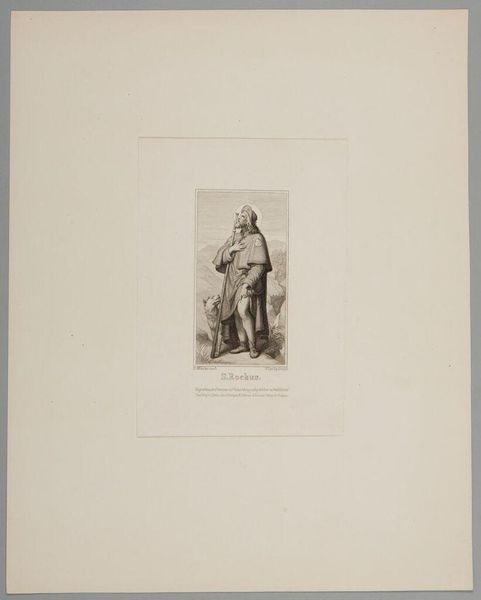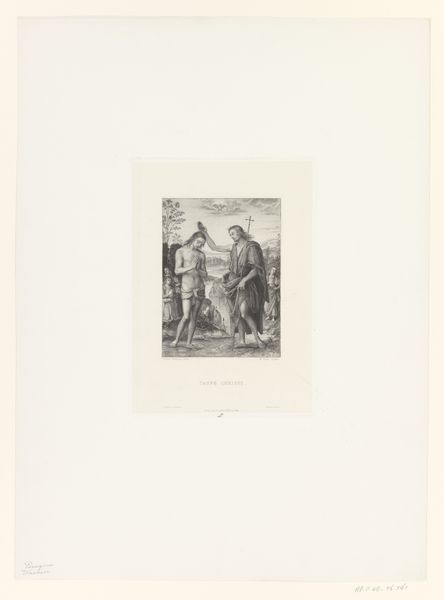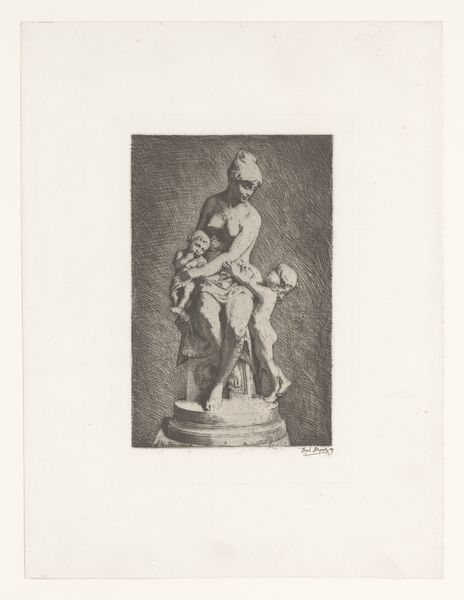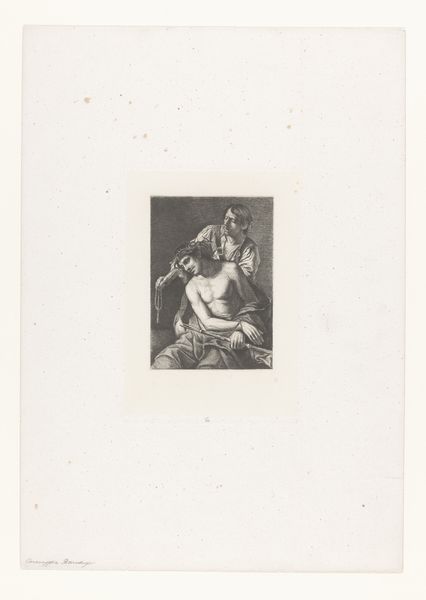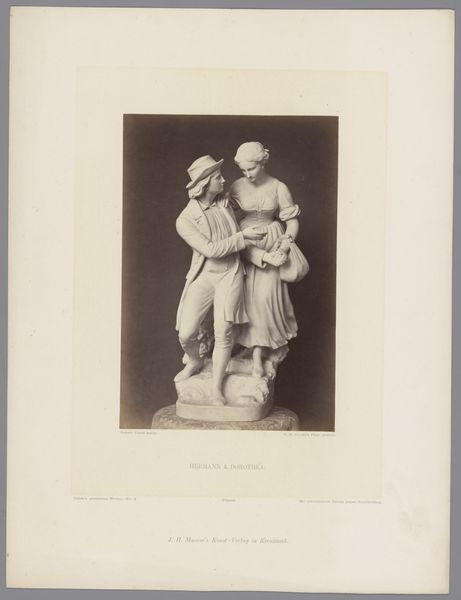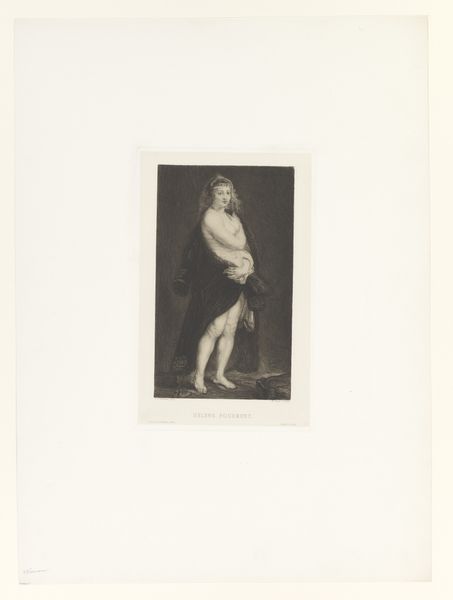
print, sculpture, engraving
#
neoclacissism
# print
#
greek-and-roman-art
#
classical-realism
#
figuration
#
sculpture
#
nude
#
engraving
Dimensions: 301 mm (height) x 205 mm (width) (plademaal)
Curator: Let’s turn our attention to Joel Ballin’s “Apollon med plektret,” which roughly translates to "Apollo with the Plectrum", made sometime between 1822 and 1885. What do you think of this rendering? Editor: Well, Apollo here certainly cuts a striking figure. Immediately, I see the stark contrasts – it’s all shades of grey. A solemn grandeur emerges from such restricted tonal choices, no? Curator: Indeed. Ballin’s focus here on Apollo – god of music, light, and healing – presented nude and in such classical style really emphasizes the...material reality that art wants to turn itself into. Here is the sculpture through the filter of the printmaker’s labor, after all! The idea of divine beauty, put into the real and often dirty work of art. Editor: Yes, I see what you mean. Looking closely, you begin to realize how physically demanding engravings are: carving all those precise lines... Ballin labored at creating Apollo from a different raw material. The shift really gives this idealized form such surprising and humble humanity. Curator: Exactly! In the neo-classical period, there was, of course, a certain fascination with reproducing Greek and Roman sculpture. The question remains though; How do we reconcile the godlike with the man-made? I think, what are those conditions that permit art? How does culture affect our labor? Ballin takes our Greek subject and adds, what could be described as a Danish aesthetic. Editor: Thinking about "labor," I noticed something I never usually think of – is that the music made on Apollo’s instrument would’ve surely provided accompaniment to physical labour: rowing songs to cadence manual exertion and weaving or knitting to accompany fireside toil! Now we’re far away from the purity of sculpture but maybe a bit closer to the essence of art… Curator: A compelling observation. He looks rather caught in time: he plays a divine music for the world, which speaks to more human concerns like everyday life. Editor: Right. What Ballin crafted speaks to the inherent link between the ideal and the material – he really made art into itself. Thank you for highlighting all the important things we may find in "Apollon med plektret," an exceptional, almost dream-like depiction that continues to haunt my ideas surrounding classical art.
Comments
No comments
Be the first to comment and join the conversation on the ultimate creative platform.
